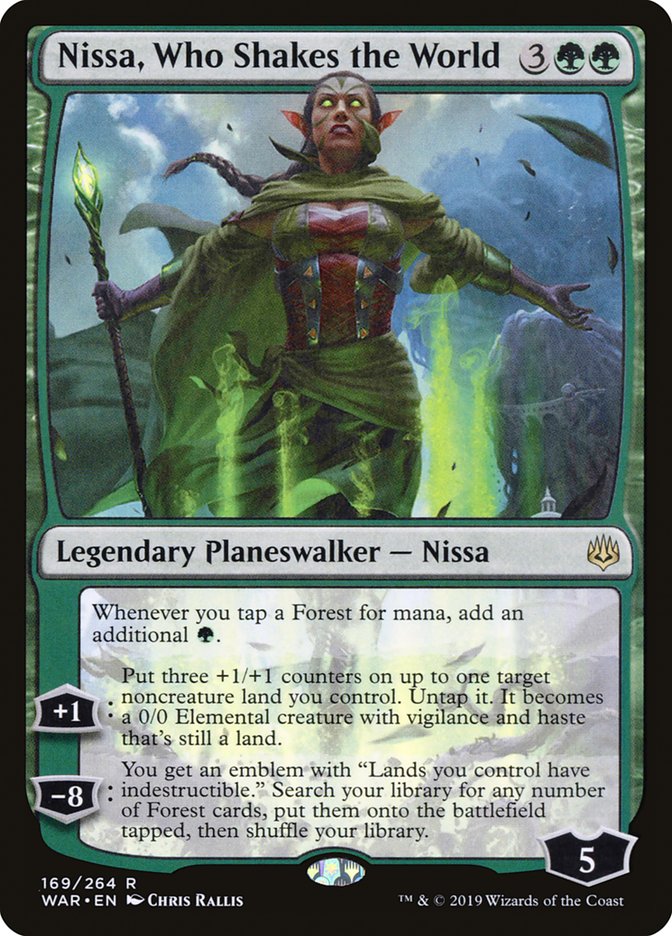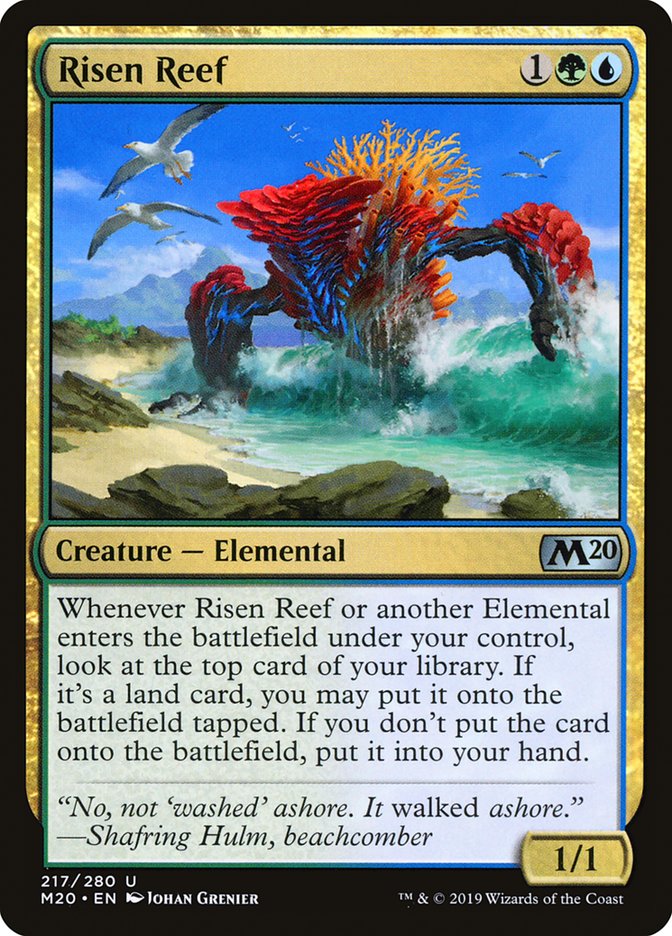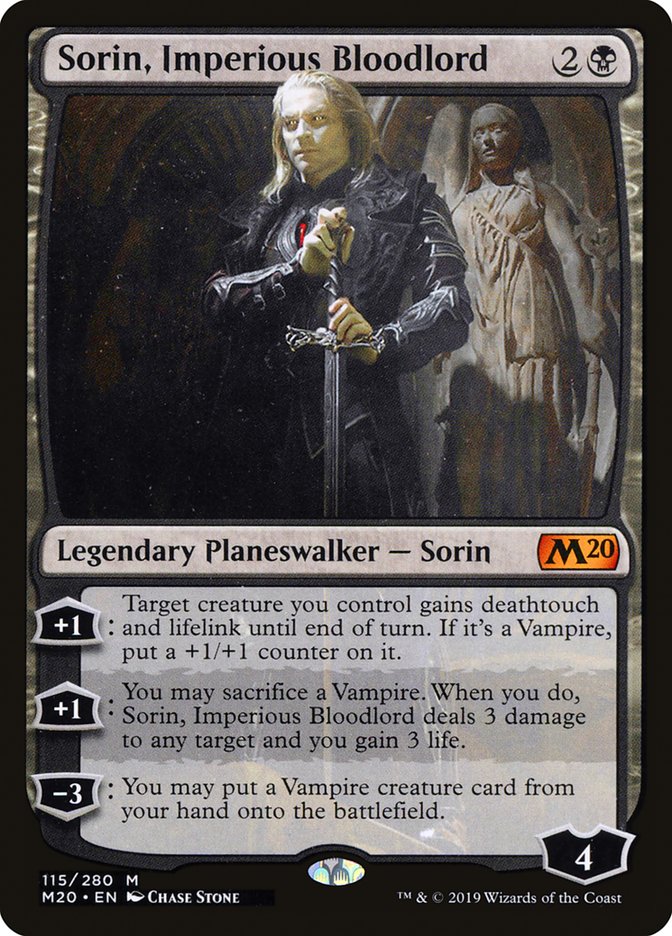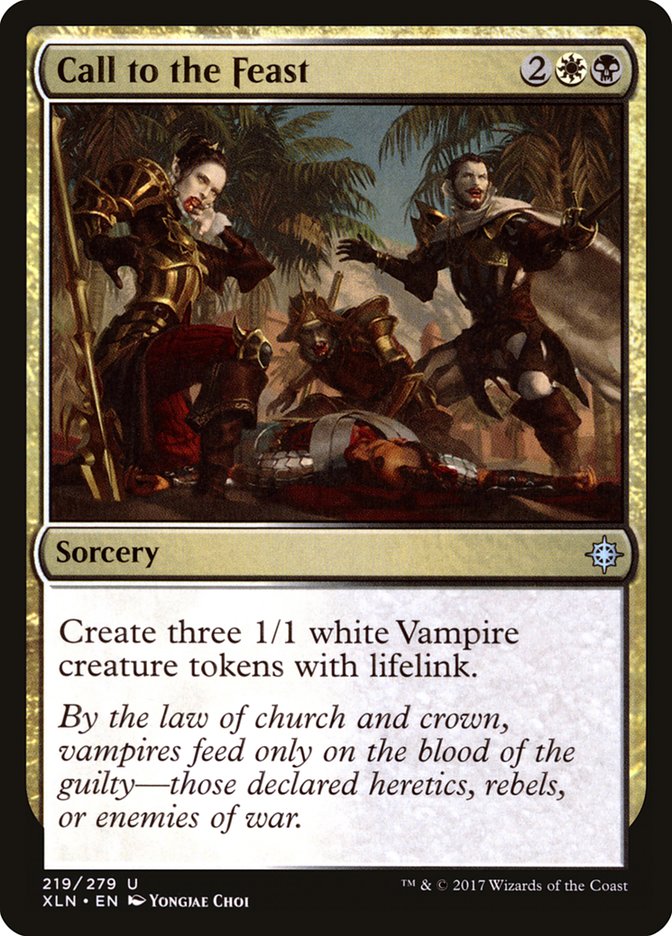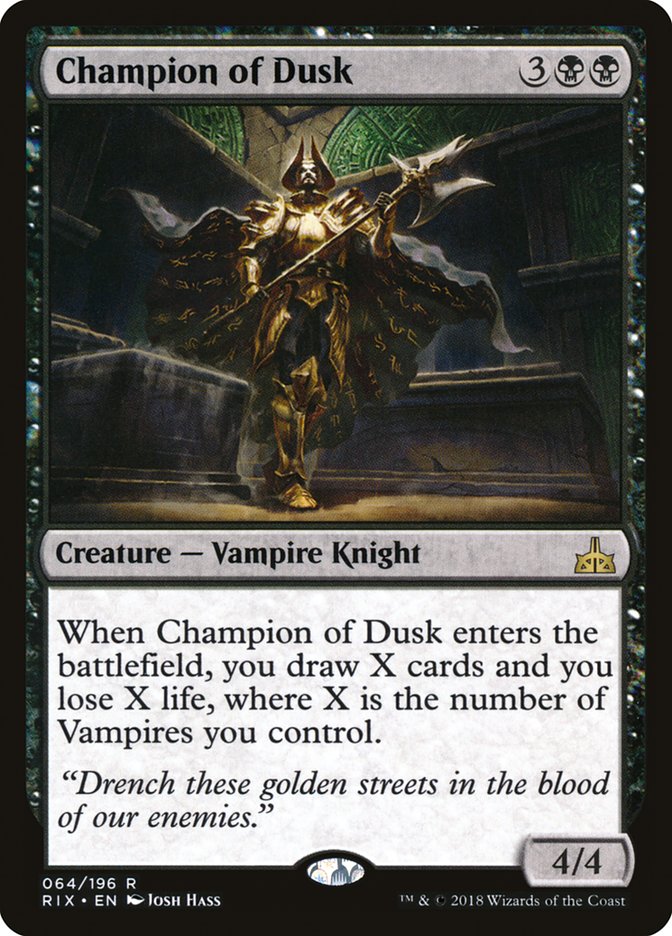Core Set 2020 is here, which means it’s time to sift through 280 cards in search of Standard’s newest gems. Rarely does the eighth set added to Standard have a dramatic effect on the format, but something tells me Core Set 2020 is going to be different. There are powerful mythics, numerous card advantage engines, and wildly good interactive spells. Times, they are a-changin’, and today I’ll be doing my best to properly prepare you for the first couple of weeks in Standard.
The first thing we should look for are potential shifts in the Standard Pillars. A pillar of a format boils down to the powerful cards decks get to build around. For example, this past Standard format was built around Nissa, Who Shakes the World; Teferi, Hero of Dominaria; and bad red cards people thought were good Experimental Frenzy. Obviously there were other decks and other pillars in the format, but they would ebb and flow in playability depending on what Nissa and Teferi decks were doing at any given time.
While it’s difficult to know what the Teferi deck will look like this early, it’s at least safe to say that Nissa will continue to be a pillar of the format, given that I believe it to be the best card in Standard. The only thing that really kept Nissa down this past season was the surrounding shells. They were fine, but not nearly as powerful as Nissa herself. That’s why it’s imperative to focus your Nissa strategies around Nissa itself. I know new cards are cool, but if your deck wants Nissa in it, there’s a good chance it wants all four.
And four Hydroid Krasis.
And four Llanowar Elves.
It’s not rocket science – play four copies of your best cards. I’ve seen many new decklists skimping on these cards and I really believe that to be a mistake. I know new cards need to be tested, so I’m not faulting anyone for their decisions, but I just find it difficult to believe the best Nissa decks don’t start with these twelve cards.
Sure, there are other awesome cards out there that occupy the same converted mana costs, but that doesn’t mean the same space. There might be two different decks out there that maximize these powerful cards individually, and eventually one will be better than the other, but that just how it goes sometimes.
I believe Risen Reef to be the main culprit for why people are skimping on the best cards in these green decks, as people want to push this little Elemental to the limits. Risen Reef synergizes extremely well with other Elementals like Wildgrowth Walker and Omnath, Locus of the Roil. Omnath works well with Leafkin Druid and Nissa, so all of a sudden we have a lot of Elemental decks filled with the explore package along with Nissa plus Hydroid Krasis. There are only so many cards you can fit into a deck, so things are getting cut in the process to try all the new cards.
I can’t tell you the best home for Risen Reef just yet, but I do believe it will be in a deck that has the ability to kill creatures. The issue is that removal in Core Set 2020 Standard isn’t great, but the reality is the less interactive your deck gets, the better Gruul Aggro and Mono-Red Aggro become. Right now, there’s a high chance that Gruul streamrolls non-interactive Simic-based ramp strategies, given the upgrades the deck got of the Dinosaur variety.
Creatures (26)
- 4 Llanowar Elves
- 4 Ripjaw Raptor
- 3 Charging Monstrosaur
- 4 Thorn Lieutenant
- 4 Gruul Spellbreaker
- 4 Marauding Raptor
- 3 Shifting Ceratops
Planeswalkers (3)
Lands (24)
Spells (7)
Sideboard

If I had to guess, the explore package will not be the best home for Elemental strategies involving Risen Reef and Omnath, as they just don’t actually synergize that well when you fill out the rest of the deck. The explore package wants to be in decks that can use the graveyard and do something extremely over-the-top once you get into the late-game. That’s why we’ve seen them in Sultai Dreadhorde decks and not in Gruul or Nexus of Fate strategies.
Maybe I’m wrong here, but this has been my golden rule when building decks with Wildgrowth Walker, Jadelight Ranger, and Merfolk Branchwalker. If I can’t utilize my own graveyard, I don’t want them in my deck. I mean, why even play them if I can’t get them back in the late-game?
Creatures (21)
- 4 Llanowar Elves
- 4 Wildgrowth Walker
- 4 Merfolk Branchwalker
- 4 Jadelight Ranger
- 4 Hydroid Krasis
- 1 Massacre Girl
Planeswalkers (8)
Lands (24)
Spells (7)
Sideboard

A Temur Elemental deck with the explore package is just trying to do too many things. Keep it simple, keep it clean. In fact, I’m not even sold Omnath will be good enough in Core Set 2020 Standard once we realize the deck needs interaction it doesn’t even have access to just to survive the aggressive onslaughts in this format. Shock and Lightning Strike simply don’t cut it, which leaves the deck with barely any way to kill creatures unless we’re willing to maindeck Lava Coil. Temur usually doesn’t have good removal – we took for granted just how good Harnessed Lightning was the last time we all played this color combination.
That said, I do think your Risen Reef deck needs removal to compete. Risen Reef is a disgustingly good Magic card, and I’m under the impression that it could push out every strategy in Standard that doesn’t go under or over it. That’s why the player with access to removal will have a huge advantage in Risen Reef mirrors. That’s at least a nod to playing Omnath in your deck, as it’s a clean way to get the pesky 1/1 off the battlefield without wasting too much time while also getting two-for-one’d.
Creatures (24)
- 4 Llanowar Elves
- 4 Hydroid Krasis
- 4 Paradise Druid
- 4 Risen Reef
- 4 Omnath, Locus of the Roil
- 4 Leafkin Druid
Planeswalkers (6)
Lands (24)
Spells (6)
Sideboard

All this talk about green decks doesn’t mean I actually know how things are going to play out. I just have a sneaking suspicion that Risen Reef will define midrange strategies and push out a ton of decks in the following weeks, Esper included. That’s right, I honestly think Teferi’s cry for things to slow down will be in vain as things continue to get more and more degenerate in this upcoming eight-set Standard.
If this happens, we will see a surge of Mono-Red Aggro and Simic Nexus come pouring back into the metagame. Both decks have suboptimal Esper matchups but will be well-positioned to beat green midrange strategies trying to one-up each other. This would then pull Esper back into the metagame and things would continue to evolve from there.
Now that’s only if some of the other strategies don’t actually have legs. On Monday, I had the pleasure of participating in the Core Set 2020 Early Access Streamer Event that Wizards of the Coast put on and I spent the entire time playing Vampire variations to a great record while learning a ton about the archetype.
The first thing to note is Sorin, Imperious Bloodlord is busted. Like, “How could they print this?” good. I’ve said for a long time that Standard can’t handle free mana, and here we are again with a wildly degenerate way to create absurd tempo plays. I guess there’s a big deck restriction on playing Sorin, as it only synergizes with tribal Vampires and most of the good cards for its shell will rotate soon, but honestly it’s just a very fun card to have access to for the short term and something every casual Vampire deck is going to want. Odds are it’s a win/win, but at the same time, this card is spicy!
Just picture this – you cast any Vampire on Turn 2. They cast a creature themselves, so now you have the option to either pump your Vampire and attack or kill what might be their first play. You do the latter, they cast another permanent, and pass the turn. It’s now your fourth turn, and you still have Sorin on the battlefield. You cast Call to the Feast and use Sorin’s -3 to put Champion of Dusk onto the battlefield, drawing four cards.
Let’s change it up and say you don’t have the Tidings combo and just have Sorin in your hand. You now can cast it on Turn 3 and use its -3 to put Vona, Butcher of Magan onto the battlefield. If they can’t answer Vona right away, the game is likely just over right there!
The more I played with this deck, the more I understood that the power of it did not revolve around going wide but actually controlling the battlefield. It’s just too difficult to go wide enough, fast enough to beat some of the absurd Nissa draws in this format. That’s why I think it might be correct to ignore the Anthem side of the deck altogether and focus on what the deck does best – things revolving around Sorin.
Creatures (17)
Planeswalkers (4)
Lands (24)
Spells (15)

It might seem strange not to play Legion Lieutenant, but the card really didn’t impress me. It was fine after I drew a ton of cards, but never backbreaking. It’s at its best in mirrors, but against the other decks, the pumping of my Vampires just didn’t matter. The only stuff that actually mattered was interacting with key cards on my opponent’s battlefield, doing stupid things with Champion of Dusk, or running away with games with an early Vona. That’s it.
This build is just a theory design. I had to see if I could push the more controlling route, so please try it before you buy it. I just really don’t think the more aggressive builds of Vampires will hold up in this format, as most two-color decks that lean aggressive tend to slow down just a bit to make sure they can interact when things don’t go perfectly for them out of the gates.
Honestly, though, if you love Vampires, just get this card and go ham. Do whatever you want with your deck and I assure you that you’ll have a wonderful time playing with Sorin and Champion of Dusk / Vona. It’s just so crazy the things you can do with these cards while also having the option to completely take over some games with Adanto, the First Fort and Sorin’s “Biting Helix.”
Hey Cedric, you can go ahead and trademark that awesome pun. It’s yours. (CEDitor’s Note: Gee, thanks Brad!)
That’s all I have for now, but I will do my best to keep up with Standard during the month of July. It will be difficult, though, as I have Mythic Championship IV to prepare for, which is Modern and Modern Horizons Draft, but I’ll take some breaks to play Standard.
After that, I’ll be playing Standard for the rest of the year, baby! No more Modern for me!


